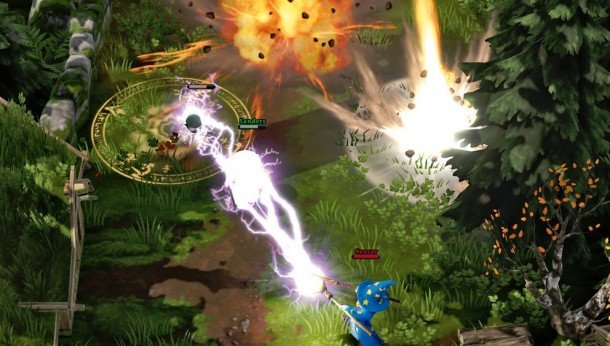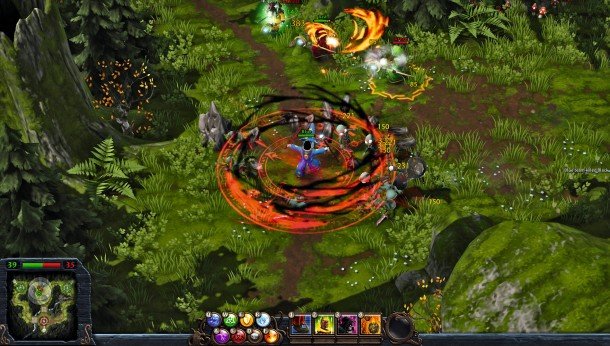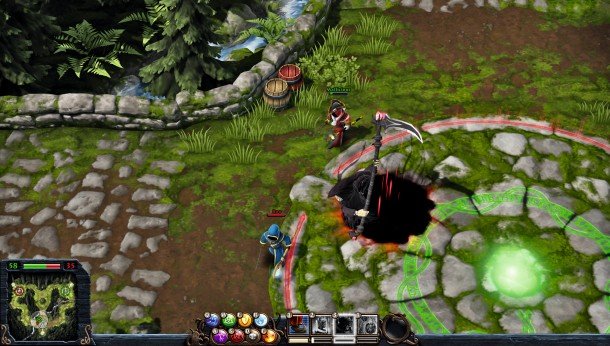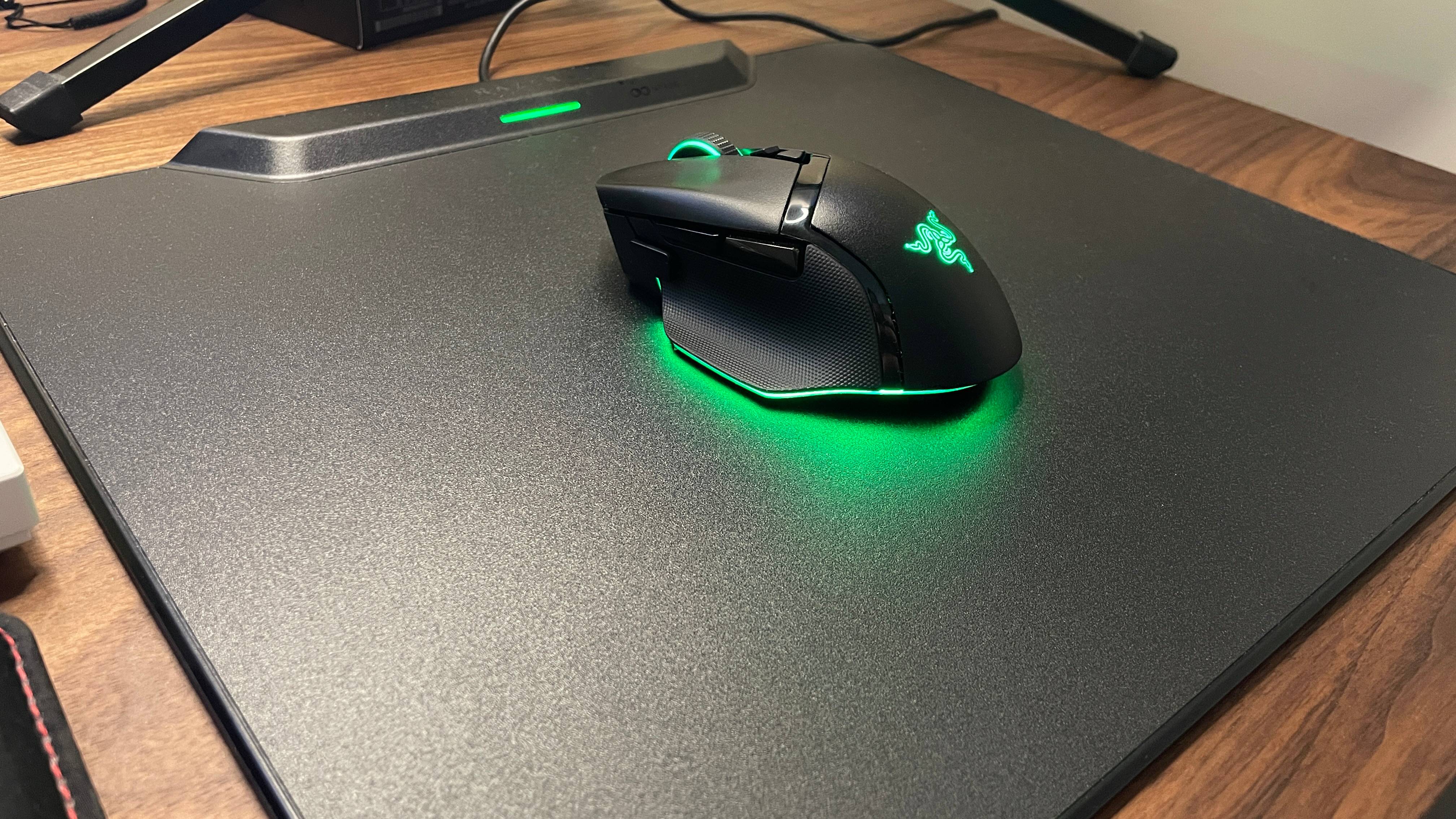Magicka: Wizard Wars hands-on: calamitous multiplayer zapping

Fire plus Arcane plus Lightning equals, um, what exactly? Help me out here, I never paid attention in school.
My urgent need to perform this elemental arithmetic can only mean one thing: I'm playing a Magicka game. Arrowhead's 2011 action-RPG abandoned spellcasting conventions such as mana points and charge times to turn magic into a creative free-for-all – you'd chuck two parts fire, two parts earth and one part healing in the figurative cauldron then cast it on yourself and see what happened (it hurt). Free-to-play Wizard Wars takes this idea and hones it, before placing it in a competitive, team-based context where the slapstick anarchy that results from such freedom makes a knockabout kind of sense.
There's not quite as much freedom as before, however, as Magicka's new custodians at Paradox North have reduced the amount of toil and trouble required for a single spell. You can only mix three ingredients now, rather than five, a reduction in multiples which brings the first game's thousands of possible spell combinations crashing down to a much more workable figure in the low hundreds. It makes sense from the perspective of gamebalance, and hundreds of spells is more than I can keep up with when I'm locked in a magical duel, anyhow. But it's always a shame to see big heaped bucketfuls of sand removed from a sandbox.

“It was fairly obvious that three [spell slots] would work,” says Niclas Karlsson, game designer for Wizard Wars. “We looked at the numbers and said, 'OK, how many spell combinations do you get when you command eight elements and can do five in a row?', and it was just a way too big number. We got it down to three because that gave us three digits instead of four.”
In practice, it seems entirely the right call: three slots suits the rapid pace of Wizard Wars perfectly, and still allows for an impossible-to-track number of strange spell interactions and effect chains. On top of the base interaction between elements themselves (you can cast water spells to douse flaming teammates, who will then be vulnerable to lightning effects), there are the hybrid effects you get from combining elements (mixing two parts arcane with one part lightning gives your occult death beam a cheeky dash of fizz) as well as the inherent physical properties of each element. A spell combination with earth at its heart will come out as a projectile rather than a stream, unless you combine earth with the 'shield' element in which case you'll get a jagged, rocky wall rising from the ground. There's a rich and complicated set of possibilities here, so in the heat of battle I naturally found myself spamming triple-fire beams and nothing else.
But while the sheer breadth of spell combinations has been whittled down in Wizard Wars, the game does have some subtle tactical enhancements. The movement system has been overhauled, meaning you can now move around and spellcast at the same time. “It keeps things fast-paced,” explains Karlsson. This faster pace translates into players chasing after one another while a geyser of flame bursts from their hand. It suits Wizard War's map design, too. Despite the very superficial likeness (cartoony visuals, disposable NPC allies, funnelled map design), what we have here is essentially an antidote to the action-RTS. An anti-dota, if you will. Its matches are short savage tussles over the control of three spawn points. The map's claustrophobic design leads naturally to massive conflagrations in which up to eight wizards hurl spur-of-the moment magic at one another in a confined space, quite possibly killing themselves and their teammates in the process.

Friendly fire underpinned a lot of the comedy in Magicka, such as those moments when, in an attempt to blast an imperilled ally with healing energy, you accidentally hit the ice key instead. But Wizard Wars' PvP-focus makes the inclusion of friendly fire riskier. It's hard not to hit your allies at times, and while that certainly adds tactical nuance to combat, it runs the risk of frustration.
Keep up to date with the most important stories and the best deals, as picked by the PC Gamer team.
“It was a hard choice,” admits Niclas. “But we felt that the pros overweighed the cons. Friendly fire enables us to give the player tactical decisions, because if you could fire all spells at any point of time then the choice you made wouldn't be that important. But if casting lightning in a situation will harm your friends more than an arcane beam would then that makes for an interesting choice, especially if there are still advantages to doing so.”
Hectic, scrappy and silly, Wizard Wars is undoubtedly a Magicka game – filled with unexpected rewards for experimentation and catastrophically comedic chains of cause-and-effect. Magicka's inventive take on spellcasting has found a natural home in this PvP-focused context, and Wizard Wars just about makes the case for fewer ingredients in a stronger brew.

